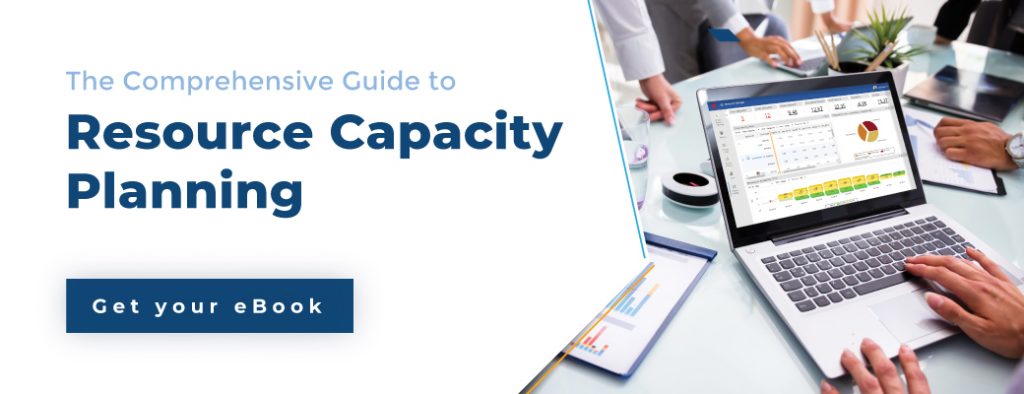The efficient utilization of people in a business is the key to profitability and business sustainability. It is a no brainer that every business endeavors to maximize the profitable utilization of their resources, the biggest investment of most businesses.
This article would help you understand the limitations of legacy systems used for the improvement of resource utilization and how a modern resource management solution will assist your business move resources proactively from non-profitable work to profitable work and maximize overall billable utilization.
Legacy Systems Currently Used by Businesses
Most of the businesses are fighting against the challenges of the 2020s with the systems developed in the 1990s. It is a bitter fact irrespective of the market size, share, or reputation of these businesses. Some Examples of the legacy systems are:
- Silos of spreadsheets built with macros
- Home-grown half-baked systems
- Windows-based systems of the 1990s
- Entry-level resource scheduling software
These are either outdated or simplistic solutions not designed to address the modern-day challenges of a business.
How Legacy Systems Fail to Improve Profitable Resource Utilization?
Following are the limitations of legacy systems hindering the process of maximizing profitable resource utilization:
- Unable to provide visibility of enterprise-wide resource demand
- Unable to address complexities of matrix organization structure
- Unable to provide resource forecasting and capacity planning
- Unable to provide multi-dimensional forecasting of profitable utilization
How Can Efficient Resource Management Technique Maximize Profitable Utilization?
Improving profitable resource utilization requires foresight into the overall utilization of resources. So that corrective actions can be taken ahead of time. But, forecasting resource utilization is a daunting task, especially in a matrix organization with constantly changing resource demand.
The following steps are required to forecast profitable utilization and proactively take corrective actions to improvise it.
- Forecast resource demand
- Forecast resource capacity
- Forecast profitable and overall utilization
- Move resources from non-profitable work to profitable
- Market and sell excess capacity ahead of time
- Build On-Demand Workforce
- Analysing Forecasted vs. Actual Profitable Utilization
The above processes are quite involved and complex. Modern resource management software can automate these processes and provide you with real-time information to improve profitable utilization.
Forecast resource demand
It is critical for a business to track all types of resource demand created by current work or future pipeline work. It includes resource demand coming from the following sources
- Current projects under progress and past projects on hold.
- Non-project activities like BAU, support, admin, operational, etc.
- Future projects in the sales opportunity pipeline.
- Future internal projects in the approval pipeline.
- Future vacations, training, holidays, etc.
Forecast resource capacity
Forecasting resource capacity means calculating the total number of standard hours an individual is available to work in the future. As per employers, arrangement Resource capacity calculation needs to account for:
- Every type of employee, i.e., full time permanent, contractors, casuals, part-timers, etc.
- Employees leaving in future due to contract completion or resignation
- Employees planned to join as new recruitment
Forecast overall and profitable resource utilization
Forecasting overall resource utilization is the ratio between the total demand forecast and total resource capacity. Similarly, forecasting profitable resource utilization is the ratio between profitable demand forecast and total resource capacity. These utilizations are mostly measured in percentages.
Corrective Actions: Move resources from non-profitable work to profitable
Once there is foresight into overall utilization, it is only a matter of mobilizing resources from non-profitable or low-priority projects to the profitable or high-priority projects by resource managers.
Corrective Actions: Market and sell excess capacity ahead of time
Similarly, forecasting capacity vs. profitable demand provides foresight into the excess available resources that can potentially go wasted. This wastage can be avoided by
- Bringing forward future profitable projects
- Selling resource time aggressively
- Restructuring capacity in different areas
Corrective Actions: Build On-Demand Workforce
Nowadays, it is critical for a business to have an on-demand workforce consisting of contractors, casuals, part-timers, freelancers, etc.
This type of workforce helps in meeting the temporary shortage of resources without any permanent overhead cost or hiring/firing costs.
Analysing Forecasted vs. Actual Profitable Utilization
It is critical to compare actual profitable utilization against the forecast on a regular basis. It helps in identifying the gap and the reasons behind it so that the overall forecasting process can be improved to achieve a higher degree of accuracy in estimation.
The Glossary
The SAVIOM Solution
SAVIOM is the market leader in offering the most powerful and configurable solutions for managing enterprise resources effectively. Having more than 20 years of experience this Australia based MNC has established its global presence across 50+ countries and has helped top global companies address their business needs. SAVIOM also provides tools for project portfolio management, professional service automations and workforce planning software.











